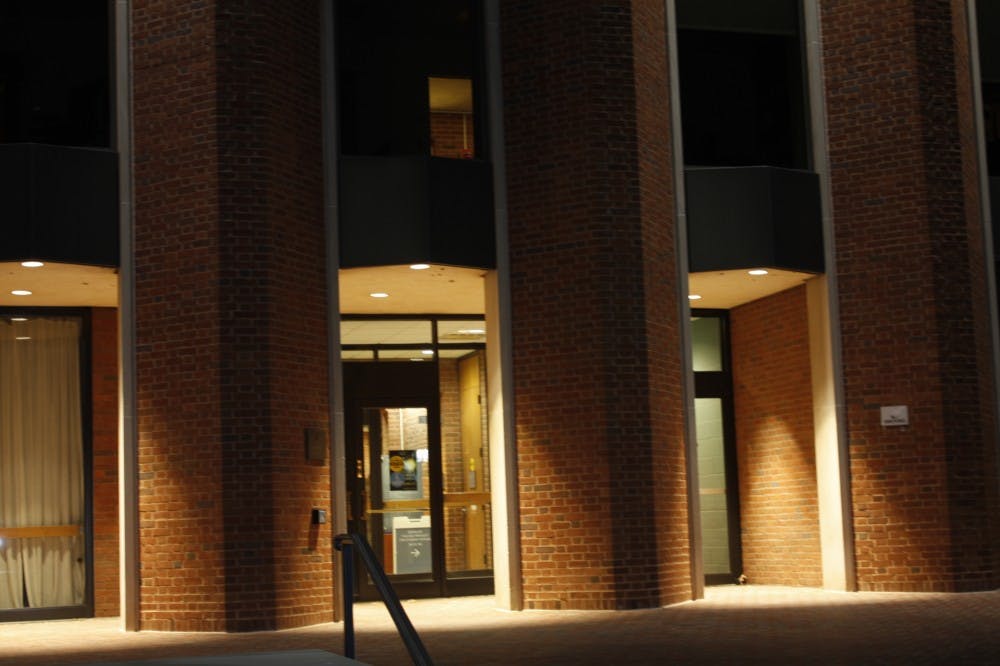Last week, The News-Letter published an article titled “On their own,” which shared the stories of eight survivors of sexual violence and their experience with the University’s reporting process through the Office of Institutional Equity (OIE). In the same week, The News-Letter also wrote an editorial criticizing the OIE’s handling of reports of sexual violence.
On Monday, The News-Letter spoke with Provost Sunil Kumar, Vice Provost for Institutional Equity Kimberly Hewitt, Title IX Coordinator Joy Gaslevic and Vice President for Communications Susan Ridge. They responded to the aforementioned articles.
Kumar noted that OIE is one of the offices that reports to the Provost’s Office. He emphasized OIE’s personal importance to him.
“OIE is a critical function in the University, and it’s important for us to continue to evaluate it, shine a light on it,” he said. “The stories of each of those students, every student, matters a great deal to me personally and to the leadership of the University. Giving voice to them is an important thing.”
In response to students’ concerns about OIE transparency, Kumar said that the Office intends to release its first annual report in the fall. The report will contain statistics about the duration of each case reported to the OIE, how many cases are resolved within 60 days, what type of resolution occurs and what actions are taken to resolve the case. These actions may include suspensions, expulsions or no contact orders.
Kumar added that the University made the decision to release an annual OIE report at the same time that the conversation about a private Hopkins police force began.
“We said if we were going to go down that path, we would need OIE reports to be publicly released in addition to our annual Security and Fire Safety Report. Because we wanted to build that accountability,” he said.
He explained that the Office has recently undergone staffing changes. Hewitt was hired in the spring of 2017 and has only been in her role for a year, while Kumar and Gaslevic were hired in the summer of 2016 and have been at the University for two years.
According to Kumar, the rest of the staff has been at the Office for around the same amount of time. In the past two years, the OIE has grown from seven people to 13, with the newest investigator starting next Monday.
Kumar addressed the possibility of increasing the number of staff members at OIE.
“If timely resolution requires more staff, we are more than willing to go down that path,” he said. “One thing I’d point out is that sometimes it’s not just about the staff. Having four investigators on the same case doesn’t necessarily end the case quicker, because of the delicate balance between timeliness of resolution and thoroughness of resolution.”
Hewitt agreed, adding that OIE’s expenditures have increased by over 60 percent. She said these expenditures include funding for the OIE itself, as well as instances when the OIE needs to consult outside counsel, such as a law firm, for help on a case.
According to Gaslevic, all new OIE staff must go through the Association for Title IX Coordinators’ Level One and Level Two investigator training programs. She said that OIE holds additional training sessions at least once a year to reiterate the material from the initial training.
At least once every other month, Gaslevic said, OIE staff meets with outside partners, such as the Office of Student Life case managers or Counseling Center staff, to listen to their feedback, which they use to improve the OIE process.
Hewitt added that one of the primary aspects of the reporting process that OIE can control and has been focusing on is how people interact with its staff and how people feel about the reporting experience.
Gaslevic then responded to some students’ concerns that the Office is located on the Homewood Campus but serves all nine academic divisions of the University.
“Our investigators are very flexible in where they can meet people,” she said. “We do a lot of outreach, and we’re very aware that we serve all nine academic divisions.”
She also addressed concerns about the effective implementation of OIE sanctions, such as no contact orders, by other on-campus offices.
“Ultimately, we have the same Title IX responsibility in every case: to stop the conduct; prevent its recurrence; and address its effects,” Gaslevic said. “We have that same responsibility in sanctions issued as well.”
According to Kumar, in instances when a faculty member is found responsible for sexual misconduct, the Dean’s offices can initiate faculty misconduct procedures although OIE cannot.
Hewitt added that OIE intends to think critically about how to improve.
“The process of investigation requires time,” she said. “Part of that is inherent in the nature of the work, so we must find the balance between the time required with how many investigators would make sense given our caseload.”





